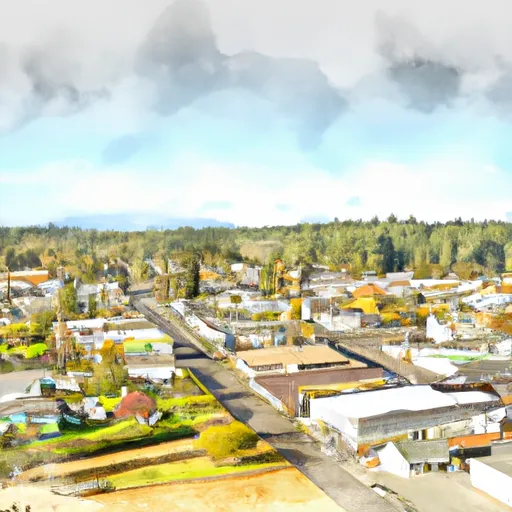°F
°F
mph
Windspeed
%
Humidity











Scappoose is a small city located in Columbia County, Oregon. It is known for its beautiful natural surroundings and offers a variety of outdoor recreational opportunities.
Scappoose experiences a temperate climate, characterized by mild, wet winters and warm, dry summers. The average annual temperature is around 52°F (11°C), with temperatures ranging from the mid-30s°F (2-3°C) in winter to the mid-80s°F (26-29°C) in summer. Rainfall is spread fairly evenly throughout the year, with the wettest months being December through February.
The city is situated near several hydrological features, including the Scappoose Bay, Multnomah Channel, and the Columbia River. These water bodies provide opportunities for water-based activities such as boating, fishing, and kayaking. Scappoose is also surrounded by lush forests and picturesque landscapes, offering ample hiking, biking, and wildlife-watching opportunities.
Outdoor enthusiasts can explore the nearby Sauvie Island Wildlife Area, where they can enjoy birdwatching and hunting, or visit the Scappoose Bay Marine Park, which has trails for hiking and a boat launch for kayaking and canoeing. With its favorable climate and abundant natural resources, Scappoose provides a welcoming environment for those seeking outdoor adventures.
Weather Forecast
Scappoose receives approximately 1427mm of rain per year, with humidity levels near 82% and air temperatures averaging around 11°C. Scappoose has a plant hardyness factor of 8, meaning plants and agriculture in this region tend to thrive here all year round.
Nearby Snowpack Depths
1
Inches
Regional Streamflow Levels
52
Cubic Feet Per Second
990
Cubic Feet Per Second
74
Cubic Feet Per Second
425
Cubic Feet Per Second
Nearby Camping
| Camping Area | Reservations | Toilets | Showers |
|---|---|---|---|
| Scaponia County Park | |||
| Camp Wilkerson | |||
| Louis Rasmussen RV Park | |||
| Hudson - Parcher County Park |



